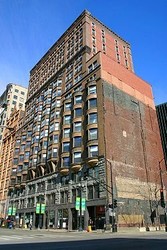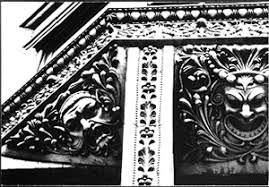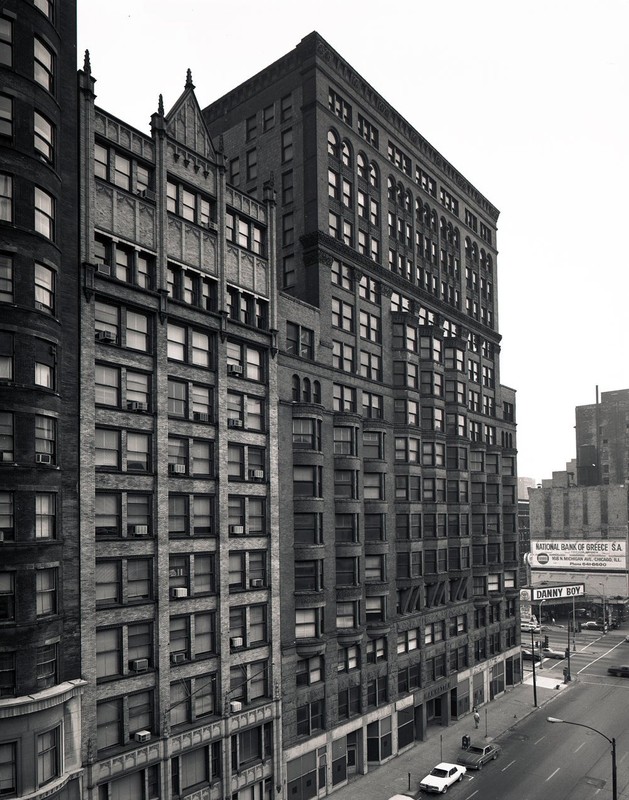Manhattan Building
Introduction
Text-to-speech Audio
Images
Manhattan Building

Detailed image of mask and vegetative detailing

Black and white photo of the Manhattan Building

Backstory and Context
Text-to-speech Audio
William Le Baron Jenney is considered one of the architects responsible for developing the modern skyscraper, which earned him the nickname Father of the American skyscraper. Jenney was born in Fairhaven, MA in 1832 to a wealthy family. He began his education at the Philips Academy in Andover, then attending the Lawrence Scientific School at Harvard but transferring to the Ecole Centrale Paris where he studied engineering, architecture, and iron construction methods. Jenney graduated from the Ecole Centrale one year after Gustave Eiffel, architect of the Eiffel Tower. When he returned to the US in 1861, Jenney joined the Union Army as an engineer. Over the course of the war, Jenney designed fortifications for Sherman and Grant, and earned the ranking of Major.
After the war, Jenney moved to Chicago, IL where set up his own architectural firm. His career and contributions to the development of modern architecture are often underacknowledged. With the completion of the 10-story Home Life Insurance Building in 1885, Jenney is credited with designing the world’s first skyscraper as the building was supported entirely by a steel frame. His use of a steel and iron structure meant that the building weighed 1/3 less than it would have with a load-bearing masonry structure, the weight change allowed for a taller building to be constructed. The Home Life Insurance Building was unfortunately demolished in 1931, set the new standard for urban architecture.
Jenney’s innovative steel-frame building structure provided the means for some of Chicago’s most famous historic buildings. Reaching a staggering height of 16-stories, the first skyscraper to reach such a height, the Manhattan Building became Jenney’s greatest achievement. Because it was still unknown how safe these new tall buildings were, he deliberately constructed the Manhattan Building with horizontal sections and setbacks as a means to lessen the appearance of 16 stories. The height of the building also required both wind-bracing techniques to be incorporated in its design and an original foundation system, which became the standard for high rise structures. As a means to maximize the amount of natural light into the building, Jenney designed the façade to feature oriel windows. The decoration of the Manhattan Building is also heavily ornamented with masks and vegetative detailing.
Today, the Manhattan Building is the third-oldest skyscraper in Chicago and is the earliest surviving skyscraper relying on an entirely skeletal support structure. The Manhattan Building was added to the National Register of Historic Places on March 16, 1976 and designated as a Chicago Landmark on July 7, 1978.
Cite This Entry
Martin-Gross, Kalen. "Manhattan Building." Clio: Your Guide to History. November 19, 2018. Accessed April 2, 2025. https://theclio.com/tour/747/5
Sources
Manhattan Building. Emporis. November 14, 2018. https://www.emporis.com/buildings/117280/manhattan-building-chicago-il-usa.
Manhattan Building. Chicago Landmarks. November 14, 2018. https://web.archive.org/web/20070203061909/http://www.ci.chi.il.us/Landmarks/M/Manhattan.html.
Manhattan Building. Chicago: A National Register of Historic Places Travel Itinerary. November 14, 2018. https://www.nps.gov/nr/travel/chicago/c14.htm.
William Le Baron Jenney. Encyclopaedia Britannica. September 21, 2018. November 14, 2018. https://www.britannica.com/biography/William-Le-Baron-Jenney#ref154958.

